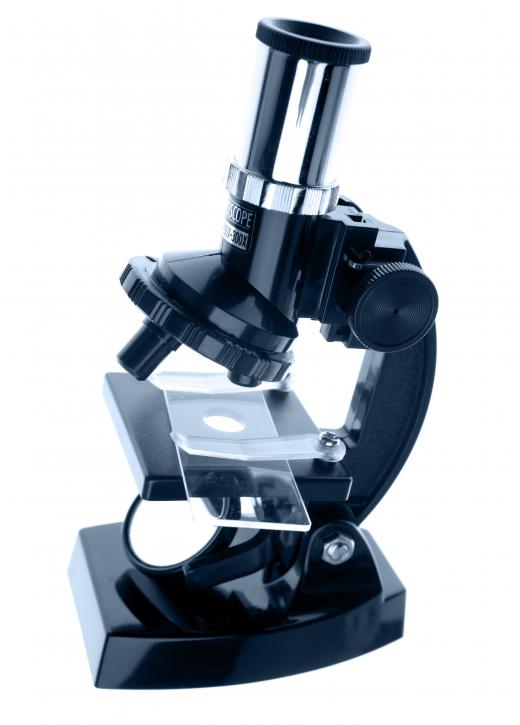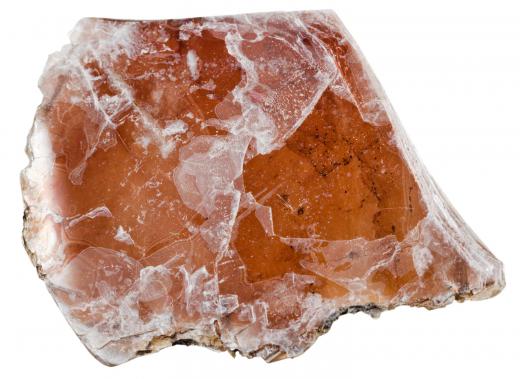What are the Different Types of Microscope Slides?
Microscope slides are used for viewing specimens through a compound microscope. This type of microscopy is light-illuminated and produces a high magnification, low resolution image. Specimens may be alive or dead and are mounted on glass or plastic microscope slides. These slides come in different sizes and styles depending on the purpose and the object being viewed. Standard glass slides are one millimeter (1mm) to one and two tenth millimeters (1.2mm) thick, but thinner slides are used with more high power microscopes.
Microscope slides may be plain and flat, or they can be concave, with a well or depression in the slide to hold a drop of fluid. Well slides are more expensive than plain slides and are usually used without a cover slip. Cover slips, also called cover glasses, come in two standard thicknesses, number one and number two. Number one slips are for higher resolution microscopy and are 0.13mm to 0.17mm thick, and number two slips are for more general use at 0.17mm to 0.25mm thick. Cover glasses are used to prevent the microscope lens from touching the specimen and to flatten and even out the water in a wet mount.

A wet mount is a common preparation of microscope slides used for viewing liquid specimens, live specimens, or any type of specimen that needs to be kept moist. To prepare a wet mount, the specimen and a drop of water is placed on a flat side using a pipette or a medicine dropper. The cover glass is then placed carefully at an angle on top of the flat slide so that the water spreads out evenly between the two slides. It is important to use the correct amount of water, because too little can crush the specimen or allow it to dry too quickly. Too much water may cause the cover slide to slip and can allow live specimen to swim too freely, making it difficult to focus.

Permanent microscope slides, unlike wet mount slides, may be prepared long before the slide is used and will include only dead specimens. A permanent slide locks a specimen in a resin seal created by the evaporation of a solvent. There are several types of permanent microscope slides denoted by different abbreviations. “wm” stands for whole mount, or an entire specimen, “ls” stands for longitudinal section, “cs” is a cross section, “sq” is a squash preparation of the specimen, “sm” stands for smear, and “st” is a stained specimen. Stained organisms may be live or dead, are often easier to see, and are used in freshly made slides as well as permanent slides.

In addition to plain flat microscope slides and well slides, there are also graticule slides. This special purpose slide has a grid printed on it so that the viewer may estimate the size of the specimen under observation. Though no longer in common use, there are also slides made of transparent mica, as originally employed in the Victorian era. Today, mica is sometimes used when glass microscope slides are too dusty, scratched, or causing too much glare.
AS FEATURED ON:
AS FEATURED ON:















Discussion Comments
good website, although they didn't really tell us the meanings of some microscope slides.
Post your comments